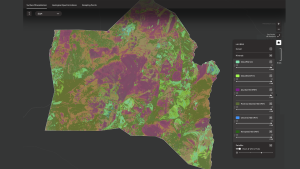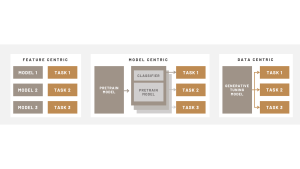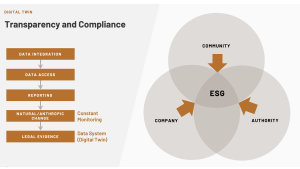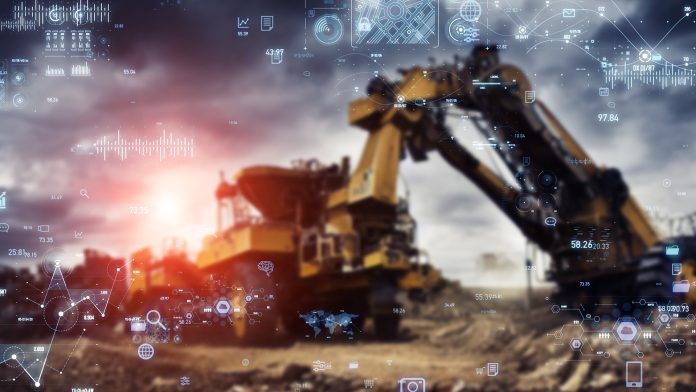Four Point is taking its expertise in implementing AI in mining practices and bringing it to Europe to upgrade efficiency and sustainability in the face of green targets.
The mining sector, essential for producing raw materials for various industries, is undergoing a transformative shift thanks to Artificial Intelligence (AI) and machine learning.
These technologies are revolutionising exploration and extraction methods, enhancing both sustainability and efficiency across the industry.
Europe: The need to bridge the AI gap
In Europe, there is an acute urgency to integrate AI into mining practices. Despite having a rich industrial base and numerous supply chain projects, these regions are lagging, especially compared to the Americas, where AI integration in mining has become more advanced.
Businesses in the Americas have recognised that the competitive edge lies in leveraging AI to streamline operations and enhance decision-making processes. This stark disparity underscores a critical need for Europe to accelerate their AI adoption and remain competitive in the global market.

Mining sector faces innovation challenges as established companies hold back, new study finds
A recent study from Australia-based resources industry researcher State of Play has shed light on a significant issue within the mining sector: The reluctance of large mining companies to innovate, leaving explorers reliant on established players. The study, encapsulated in a comprehensive 78-page report, emphasises that nearly 90% of industry professionals believe that explorers are not at the forefront of developing new processes. Instead, 60% argue that major and mid-tier miners should spearhead innovation.
The researchers attribute the high-risk nature of exploration as a major reason why larger operators have curtailed their exploratory endeavors. A survey included in the study, which encompassed responses from 720 miners, suppliers, government officials, investors, and researchers across 50 countries, revealed that risk appetite was a major deterrent, significantly affecting the rate of exploration. The study also points to a profound disconnect between explorers and those dictating the future of exploration technology and methods, underlining a pressing need for a rethink in strategy and support.
Four Point innovates with AI to transform exploration
Contrasting with the broader industry’s slow pace of innovation, Four Point is making strides with its advanced alteration mineral mapping technology, enhanced significantly using Generative AI and novel techniques. This technology allows mineral exploration companies to understand the geology and mineralisation of the areas they operate in more accurately and efficiently.
“We’re eliminating a lot of fieldwork,” explains a Four Point spokesperson, “with our technology, geologists can obtain and work on alteration mineral maps, even in adverse conditions like snow cover.”
Four Point’s business is divided into two main segments: the TerraEye Platform, which provides unmatched capabilities in alteration mineral mapping, and an early detection system for environmental impacts used in monitoring open-pit mines and tailings ponds. The company has also developed digital twins for these applications, enhancing the planning and monitoring phases of mining operations.
By sourcing data from satellite companies and applying deep learning technologies, Four Point can identify 22 different types of alteration minerals based on how the earth’s surface reflects or absorbs light. These insights are crucial for explorers to pinpoint areas of interest for more detailed investigation, potentially leading to significant discoveries.
As we look at vast expanses, the ability to remotely pinpoint target areas using satellite-based data is invaluable. This not only saves time but reduces the environmental impact of ground-level exploration. This juxtaposition of an industry-wide innovation bottleneck with Four Point’s forward-thinking approach underscores the potential for technology-driven transformation in mining, suggesting a path forward that could reshape exploration strategies and operational efficiencies worldwide.

Foundation models: Transforming mining on a global scale
Four Point’s AI Foundation Model serves as a blueprint for how AI can be effectively utilised in mining.
Trained on diverse datasets, this model enables companies to conduct environmental monitoring, predictive analytics, and resource management with unprecedented accuracy.
Such capabilities are crucial as Europe aims to achieve its 2030 targets for raw material independence and sustainability.
The competitive edge of AI in mining
The use of AI in mining not only streamlines the identification and extraction of resources but also provides significant environmental benefits. AI models can predict where to find resources with minimal environmental disruption, significantly reducing the area affected by mining operations. Furthermore, AI can optimise the use of resources and energy within mining processes, leading to less waste and lower emissions.
The necessity of speed in AI integration
For Europe to catch up with the advancements seen in the Americas, rapid integration and scaling of AI technologies in mining are essential.
This means not only adopting existing technologies but also investing in the development of new AI solutions tailored to the unique geological and regulatory environments found in European countries.

Policy and investment support
Government policies and investments play a pivotal role in facilitating the adoption of AI in mining. Policies that support research and development in AI provide incentives for adopting green technologies and create a favourable environment for digital innovation, which can accelerate the adoption of AI in the mining sector.
Additionally, investments in AI education and training can equip the current and future workforce with the necessary skills to implement and leverage AI technologies effectively.
Collaborative efforts for integration of AI in mining
Collaboration between tech companies, mining corporations, and governmental bodies is crucial for the successful integration of AI in mining. Partnerships can leverage different strengths and perspectives, leading to more innovative solutions and more effective implementation.
These collaborations can also help align the objectives of profitability and sustainability, ensuring that the benefits of AI in mining are realised across economic and environmental dimensions.
For Europe to close the competitive gap with the Americas, adopting and integrating AI in mining is imperative. Four Point’s success story provides a compelling template for how AI can not only enhance operational efficiency but also foster sustainability.
As Europe advances towards its strategic raw material goals, embracing AI technologies will be pivotal in ensuring the mining sector meets future demands responsibly and innovatively, aligning economic activities with environmental stewardship for lasting global impact.
The journey towards AI-enhanced mining is not just a pathway to economic resilience but also a commitment to sustainable development in the face of global environmental challenges.
Please note, this article will also appear in the 18th edition of our quarterly publication.










